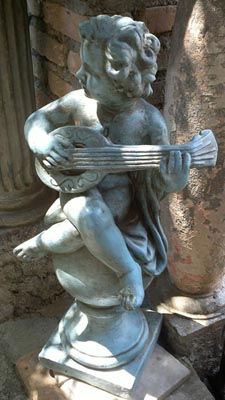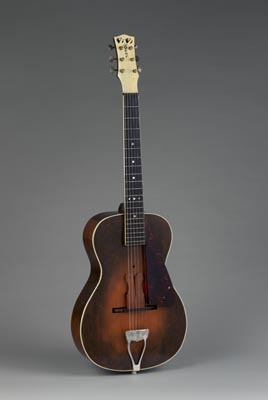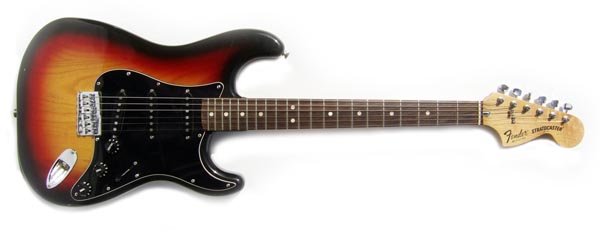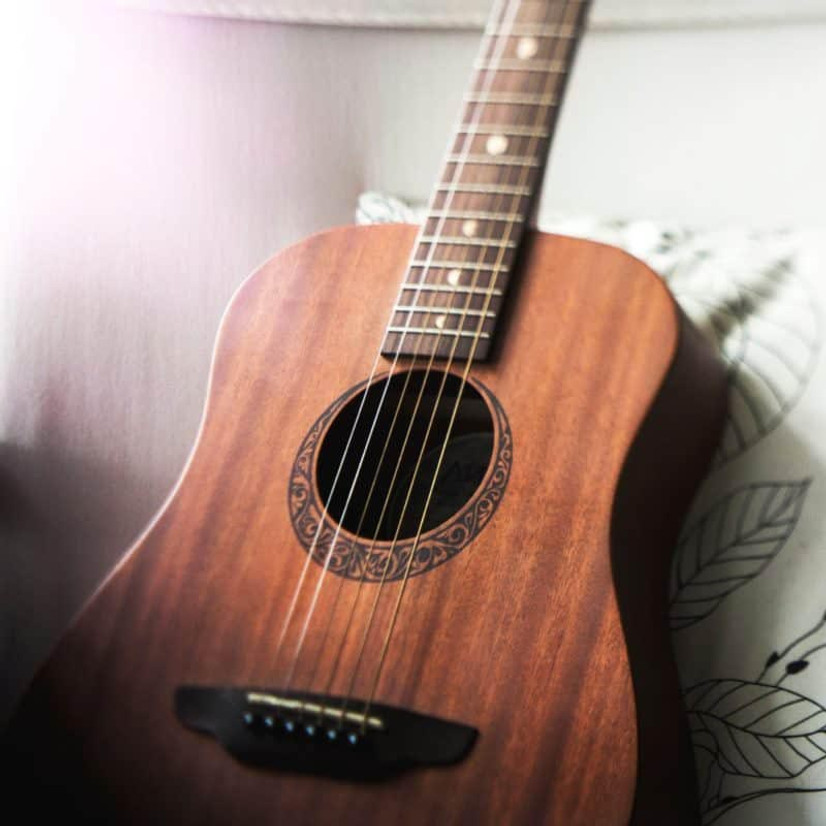The Evolution of the Guitar
The guitar is one of the most popular instruments in modern music. It is the core instrument of genres like rock and blues and it is beloved by music aficionados and hobbyists alike. What few know, though, is that the modern guitar is a relatively recent invention. The evolution of the guitar is certainly an interesting journey, starting before written language and developing through the modern-day. A story that's as much about engineering and innovation as it is music, the tale of the guitar starts in the distant past.
Early Stringed Instruments
The guitar is a member of the great chordophone1 family, one of the four major types of instruments. Classified as a type of lute - that is, a stringed musical instrument that has a neck that stretches out the strings and can be used as a handle - the guitar is closely related to instruments like the violin and the sitar.
The guitar probably traces its lineage back to the very oldest of the stringed instruments. There are carvings from over three thousand years ago that show ancient Babylonians playing stringed instruments, for example, and several others from across the Middle East that point to an incredibly ancient origin for this type of instrument.
 Ancient statue depicting the lute.
Ancient statue depicting the lute.
Though the guitar's lineage is quite old, the actual antecedents of the instrument are probably a bit more modern. Most historians tend to point towards the 8th century Arabic Oud2 and the 11th century European Lute as instruments that greatly influenced the development of the modern guitar. Both of these instruments have features that one would typically see in a modern guitar, including a hollow body and several strings. It is the lute, however, that seems to have been more popular in those areas where the guitar would eventually be developed.
The four-stringed European lute is notable for introducing frets to the instrument as well as introducing a variation on the peg-based tuning mechanism that is still used in modern guitars. From here, though, consistent variations on lute design as well as a bit of innovation would lead to the instrument known as the guitar.
The First Guitars
While it's not quite certain exactly when guitars started to be used, it is known that they were fairly popular in Spain by the 12th century. 12th Century Spain actually featured two types of guitar - the Moorish3 and Latin guitars. It was the latter of the two, with a single hole for sound, that had the greatest resemblance to the modern guitar.
Though the Moorish guitar was quite popular in Spain, it was the Latin guitar that would lead to the next innovation. The next iteration of the instrument that would evolve into the guitar was the vihuela. This instrument was something of a transitional form between the lute and the guitar, but it was a direct antecedent of the Baroque, and thus the modern, guitar.
The Baroque Guitar was a five-stringed replacement for the lute in much of Europe. These instruments featured a single sound-hole, frets, and five strings tuned to E - B - G - D - A. Variations on this form of the guitar would remain popular up through the middle of the 19th century both in Spain and throughout western Europe.
If you're looking for the birth of the modern guitar, though, you can point to a year and a place. The instrument that most would recognize as a modern guitar was Antonio Torres Jurado of Spain4. He is credited with bringing the guitar to its modern size and shape in 1850, as well as increasing the instrument's durability and utility. The degree to which the guitar has remained structurally unchanged over one hundred and seventy years absolutely speaks to Jurado's genius when it comes to instrument design.
 The Baroque Guitar.
The Baroque Guitar.
Major Changes
While Jurado is largely responsible for the enduring design of the Spanish, or classical, guitar, that doesn't mean that the instrument hasn't involved. Though the classical guitar remained incredibly popular throughout Europe, it would see a few major changes as European immigrants brought the instrument to the New World.
The biggest major change to the design of the guitar came from a German immigrant named Charles Martin. Martin changed the way that the guitar was braced, adding an extra level of durability that was better able to survive steel strings. This flat-topped guitar would become incredibly popular both in the Americas and in Europe, as the new design required a switch to a new chord-driven style of music.
Martin wasn't the only person changing the way guitars were made, though. Orville Gibson further changed the design with his archtop guitar. This iteration of the guitar featured a body design that was much more like that of the cello, increasing the overall volume of the instrument. Gibson also brought innovations like the adjustable bridge and the F-holes to the guitar, helping to further separate the instrument from its classical roots and gaining a new audience in the form of country and jazz musicians.
The Electric Guitar
Even though the guitar had undergone some major improvements heading into the 20th century, it actually lost a great deal of popularity during the Big Band and Swing era. The major issue was that the guitar was just too quiet and would become overwhelmed in an ensemble. While musicians experimented with using microphones to amplify their guitars, it would take a major evolution for the guitar to regain its popularity.
 The Vivi-Tone Guitar.
The Vivi-Tone Guitar.
In many ways, Adolph Rickenbacker saved the role of the guitar in popular music. He, alongside George Beauchamp, is given credit for the first electric guitar patent in 1931 5. This new iteration of the guitar worked by used pickups to transform the vibration of the steel strings of the guitar into electronic signals that would be transmitted to the instrument's amplifier to create a sound that would carry over other instruments and across larger crowds.
Unfortunately, the initial design of the electric guitar still led to a great deal of feedback. The hollow body design of the guitar just didn't work as well as intended, so a number of different luthiers got to work on their own designs. The goal was to create a guitar that could still produce an electric tone without the level of feedback that came from the traditional guitar's design. Doing so required radically rethinking how the guitar worked - and from this race came the first solid-body electric guitars.
The first solid-body electrics were oddities at best. The Vivi-Tone used a sheet of plywood over wood, while the Electro Spanish used bakelite. Neither one of these guitars set the world on fire - but these prototypes led to a number of other designers getting in on the same game. By 1936, Gibson was back with the ES-150, the guitar famously used in what is considered to be the very first guitar solo6. Though the ES-150 was a fairly expensive instrument - the guitar and amp cost about twenty-eight hundred dollars in modern money - it nonetheless proved that the concept behind the solid-body was strong enough to see future iterations.
Modern Upgrades
The upgrades to the electric guitar did not stop with the solid-body guitar. In 1940, Les Paul introduced the solid-body 'log' guitar, which is often credited as the first 'true' solid-body electric guitar. The next upgrade would come from Leo Fender, who introduced the single-pickup Fender Esquire, the first commercially-successful solid-body guitar. With Fender's release came a boom in electric guitar ownership not only among working musicians but also among hobbyists who could now own their own electric set-ups.
From here, the electric guitar industry would boom. 1951 would see Gibson introducing the L5CES, a guitar that could be played either as an acoustic guitar or as an electric guitar. Gibson would also introduce the Gibson Les Paul in 1952 and in that same year, Fender would introduce its legendary Stratocaster. Both companies, as well as dozens of up-starts and long-term competitors, would continue to manufacture new iterations of these designs as well as upgrades for decades to come.
 1978 Fender Statocaster Hardtail Guitar.
1978 Fender Statocaster Hardtail Guitar.
The world of guitars is one of constant innovation. Even after the evolution from the lute to the modern solid-body electric guitar, guitars have continued to evolve. From more efficient pickups and synthetic strings to wildly creative body shapes and new string configurations, the guitar is an instrument that will continue to change along with the music. Though it often seems like the most innovative days are in the past, there's really no telling where the guitar might go next.
References
- https://en.wikipedia.org/wiki/Chordophone
- https://www.arabamerica.com/a-short-history-of-the-oud-king-of-instruments/
- https://en.wikipedia.org/wiki/Guitarra_morisca
- https://classicalguitarmagazine.com/from-the-archives-a-200th-birthday-appreciation-of-luthier-antonio-de-torres/
- http://www.rickenbacker.com/history_early.asp
- https://www.jtmp.org/2013/06/07/583/
Recent Posts
-
Henry Ford: Automotive Visionary
Henry Ford was one of the pioneers of the automotive industry. Even today, 120 years after it was f
-
The Rise of the Elevator
For many people, elevators are one of those parts of everyday life that you just don't think about.




